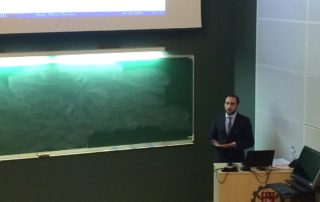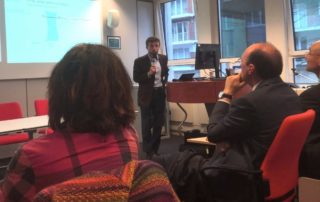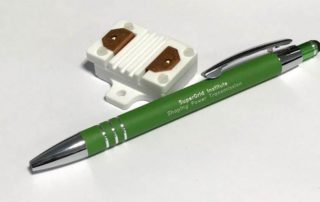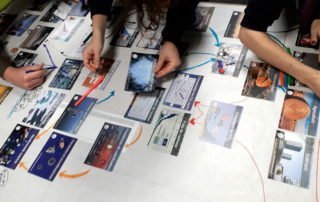Nos actualités
Phd Paolo ERRANTE “Liquid Spray Injection inside the expansion volume of a CO2 High Voltage Circuit Breaker”
In the framework of the research activities of the High Voltage Substation Equipment program of SuperGrid, it has been proposed to introduce such species by means of an evaporative liquid spray. The interaction between injected droplets and the mixture of hot gases successively flowing into the chamber and vented outside the chamber during the mechanical separation of the electric contacts should allow spray evaporation and transport of the modified gas mixture towards the arc region.
HVDC plays a key role in the future AC/DC power systems
This Tuesday the 4th of February, at the European Commission’s Directorate General for Energy, Bruno Luscan, CTO of SuperGrid Institute, presented the company’s vision on the importance of the role of HVDC links within AC/DC networks.
HVDC plays a key role in the future AC/DC power systems
This Tuesday the 4th of February, at the European Commission’s Directorate General for Energy, Bruno Luscan, CTO of SuperGrid Institute, presented the company’s vision on the importance of the role of HVDC links within AC/DC networks.
Phd Majed Eddine MOUSTAID “Experimental development of a thermosiphon loop for thermal regulation of power electronic devices”
The work of this thesis focuses on the experimental development of a passive and biphasic cooling system to cool down power electronics. Some of those modules are mean voltage power converters developed by Supergrid Institute. Some constraints have been imposed upstream to this project. While some limitations are of the technological nature, other constraints are related mainly to the environmental and biological aspects. The first part of this thesis was to find a suitable cooling system that could be adapted to the project specifications. After some research, we decided to build a loop thermosiphon filled with NOVEC 649.
SuperGrid Institute has achieved a major milestone in the development of 10 kV Silicon Carbide (SiC) devices
SuperGrid Institute has achieved a major milestone in the development of 10 kV Silicon Carbide (SiC) devices such as 5A BJT and 50A PIN diode as part of its work on developing innovative solutions for MV converters. Recent tests revealed outstanding switching performances.
SuperGrid Institute wishes you an electric new year!
SuperGrid Institute wishes you an electric new year! [...]
SuperGrid Institute organised its Climate Collage event
This Tuesday, the 17th of December, SuperGrid Institute organised a Climate Collage event for its team. The Climate Collage is an interactive workshop based on collective intelligence that raises awareness of climate change and allows participants to gain a better understanding of the the complexity of this issue in a fun and easy way.
SuperGrid Institute organised its Climate Collage event
This Tuesday, the 17th of December, SuperGrid Institute organised a Climate Collage event for its team. The Climate Collage is an interactive workshop based on collective intelligence that raises awareness of climate change and allows participants to gain a better understanding of the the complexity of this issue in a fun and easy way.
Majededdine MOUSTAID was awarded the HEFAT 2019 Outstanding Paper Award
SuperGrid Institute is proud to announce that Majededdine MOUSTAID was awarded the HEFAT 2019 Outstanding Paper Award for their “Study of convective condensation in a thermosiphon loop”, in the “heat exchangers 2” session. Congratulations for this well-deserved recognition! This study was a collaboration between SuperGrid Institute, Ampère Laboratory & LaTEP.
Majededdine MOUSTAID was awarded the HEFAT 2019 Outstanding Paper Award
SuperGrid Institute is proud to announce that Majededdine MOUSTAID was awarded the HEFAT 2019 Outstanding Paper Award for their “Study of convective condensation in a thermosiphon loop”, in the “heat exchangers 2” session. Congratulations for this well-deserved recognition! This study was a collaboration between SuperGrid Institute, Ampère Laboratory & LaTEP.









